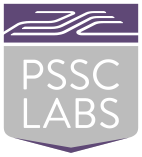Supercomputing is most commonly thought of as a tool only for the largest government agencies, top commercial companies, and most prestigious universities — not your everyday small and medium-sized businesses (SMBs). The focus of supercomputing is typically on the largest systems, which scale well beyond many thousands of processor cores. Many SMBs believe supercomputing capabilities to be well beyond their reach, but nothing could be further form the truth. SMBs need a competitive advantage to obtain government and commercial contracts, and that advantage is a powerful, scalable, high performance supercomputing platform.
Over the past 12 months, interest and deployment of high performance computing clusters at SMBs performing computational fluid dynamics (CFD), finite element analysis (FEA) and structural engineering work have trended significantly upward. Without HPC systems, the work these organizations are accomplishing would be nearly impossible. But with the right systems, it could be the lifeline to their organizational success. “Supercomputing is not just for the large and powerful organizations,” says Alex Lesser, Vice President of PSSC Labs. “Supercomputing is an accessible tool for everyone. Small and Medium Businesses need to leverage these tools to ensure their success, and it does not have to be costly or intimidating.”
PSSC Labs works closely with several trusted leaders in the design and engineering space. These organizations develop state-of-the-art physics-based models for test programs, modeling and simulation analysis solutions for highly dynamic events and reactivity of energetic materials, and much more. Many of our clients also design simulation software in multiple areas of physics, including computational fluid dynamics (CFD), aero and hydro acoustics, and more. The technology these best-of-breed design and engineering firms have developed are applicable to many areas of interests to scientists, engineers, technologists, and educators. We’re proud to support game-changing organizations with the necessary HPC hardware systems they need to build the best of the best, while giving them immediate, frontend access to a variety of CFD applications, including Ansys Fluent, Star CCM, CFD++, and OpenFOAM, as well as Finite Element Analysis (FAE) applications, like Abaqus FEA, COMSOL Multiphysics and SimScale.
POWERWULF ZXR1+ HPC CLUSTER
Starter configuration for under $100k
- 200 Intel or AMD Processor Cores
- 4 GB of Memory Per Processor Core
- 100 Gbps High Speed Network
(Intel Omnipath or Mellanox Infiniband) - 10 TB High Performance Flash Storage
- 40 TB Long Term / Secondary Storage
- CBeST Cluster Management Toolkit
- Linux Cluster Operating System
- Message Passing Libraries
- Batch Scheduled
- Complete 3 Year Service Level Agreement

While some SMBs might be hesitant to deploy an on-premise HPC platform due to the lack of an internal IT department or perceived level of complexity, these concerns are easily put to rest when partnering with the right partner. PSSC Labs’ goal is to deliver the most turn-key, highest performance, head-ache free HPC experience possible. Our PowerWulf ZXR1+ Clusters include all necessary hardware, software, and networking integrated by 20+ year HPC experts. “We are very proud of our 57 step testing and integration process, which is considered one of the industry’s most rigorous,” begins Larry Lesser, PSSC Labs Chief Technology Officer. “The results of this painstaking process are evident with a record of never delivering a DOA system and a consistently proven 99.99% system uptime.” PSSC Labs stands firmly behind their product with a complete hardware and software service level agreement for up to five years. Because PSSC Labs is both the manufacturer of the hardware and developer of system software, SMBs have one phone number to call for immediate access to knowledgeable support.
Cloud providers and brokers will continue to try scaring SMBs into believing that they are incapable of supporting an on-premise HPC solution. They may argue the merits of using offerings from Amazon, Microsoft and Google will save companies significant cost, offer superior performance and greater scalability, but they’re wrong. SMBs in the Design & Engineering space are comprised of very intelligent and experienced engineers who can evaluate the numbers on their own and are not easily swayed. Companies who choose the cloud over on-premise models are accepting ever-expanding monthly bills, loss of control and governance, and lower security, while allowing their data to be completely at the mercy of a third party. With the threat of cyber attacks ever-looming, putting critical and confidential data on the cloud is possibly one of the most irresponsible things SMBs could do. A quick read of the “Cloud Hopper” investigation by the Wall Street Journal should serve as a stark warning.
More and more SMBs are deploying HPC systems than ever before. On-premise, high-performance supercomputers are well within the grasp of design & engineering organizations of all sizes. SMBs need to utilize these tools to develop new products, win more contracts and push their businesses forward.





